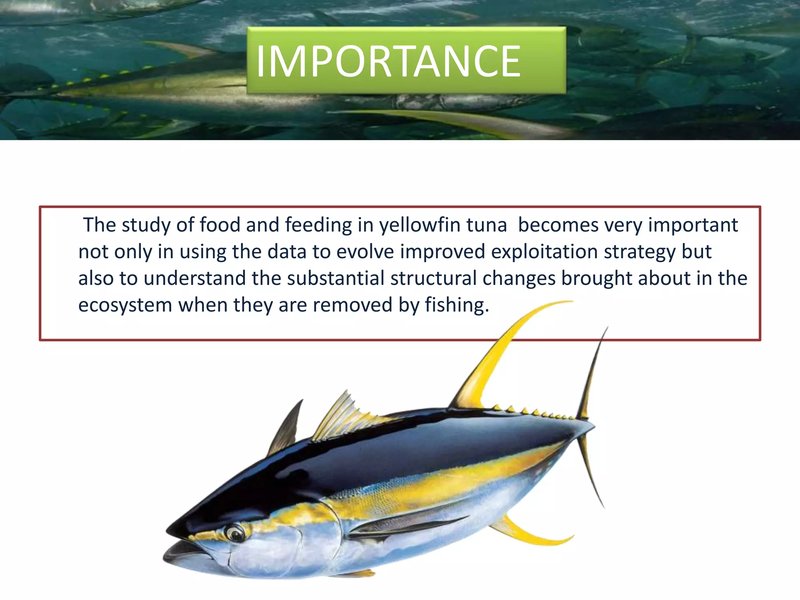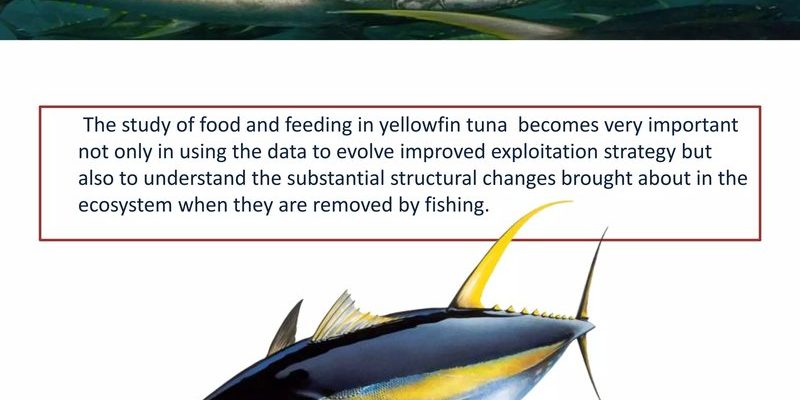
Let’s dive into the diet and feeding habits of tuna in a way that’s easy to understand. Think of it as a journey into their ocean kitchen where you’ll meet the ingredients they prefer, their hunting techniques, and what makes them such successful predators. Whether you’re a curious foodie or just someone who enjoys learning about nature, you’ll find the world of tuna’s diet as intriguing as the ocean they inhabit.
Understanding Tuna Species and Their Diets
Tuna come in several different species, each with its own unique set of dietary needs. The most commonly known species include bluefin, yellowfin, albacore, and skipjack tuna. Each type has adaptations that allow it to thrive in its specific habitat. For instance, bluefin tuna are larger and often consume bigger prey, while skipjack are smaller and feed on smaller fish and invertebrates.
– Bluefin Tuna: These giants can weigh over 1,000 pounds! Their diet mainly includes larger fish like mackerel, herring, and even other smaller tunas. They’re known for their speed and strength, which help them catch fast-moving prey.
– Yellowfin Tuna: Known for their striking yellow fins, these tuna are versatile eaters. They go for fish like sardines and anchovies, showing a preference for schools of smaller fish. Their hunting method often involves chasing schools of fish, using their speed to outmaneuver them.
– Albacore Tuna: Smaller than the bluefin but still mighty, albacore tuna often dine on squid, a particular favorite. Their hunting strategy often involves deep dives to catch their prey, which helps them access different layers of the ocean.
– Skipjack Tuna: These are the smallest of the common tunas and are often found in warmer waters. They feed predominantly on smaller fish and some crustaceans, making them agile hunters that dash through schools of prey.
How Tuna Hunt for Food
Tuna are highly skilled hunters, and their feeding habits are fascinating. Here’s the thing: tuna don’t just sit around waiting for food to come to them. They actively hunt and are known for their remarkable hunting techniques.
1. Schooling Behavior: Many species of tuna prefer to hunt in groups, known as schools. This behavior helps them corner their prey more effectively. When you see a school of tuna working together, it’s like watching a well-rehearsed dance that maximizes their chances of success.
2. Speed and Agility: Tuna are built for speed. Their streamlined bodies allow them to swim at incredible speeds, often exceeding 40 miles per hour. This speed is crucial when they’re chasing down fast-moving fish. Imagine trying to catch a ball thrown at lightning speed—tuna do this with their prey!
3. Sensory Systems: Tuna have excellent eyesight and can detect changes in light and movement. They’re also equipped with incredible lateral lines that sense vibrations in the water. This combination of features makes them formidable predators that can locate and pursue prey even in murky waters.
4. Ambush Techniques: Some tuna will use stealth and surprising bursts of speed to ambush their prey. They may approach quietly before unleashing a powerful chase that catches their dinner off guard. It’s like a game of hide-and-seek, but only one side knows it’s playing!
The Role of Diet in Tuna Growth and Health
What tuna eat plays a significant role in their overall growth and health. A well-balanced diet helps them grow strong and maintain their impressive swimming abilities. Here’s why diet matters so much for these fish:
– Energy Requirements: Tuna are active animals that require a lot of energy. Their diet provides the necessary fuel for their daily activities, including hunting, breeding, and migrating. Think of it as fueling a high-performance car; without the right fuel, it just won’t run optimally.
– Nutritional Needs: Different species of tuna require various nutrients to thrive. For instance, omega-3 fatty acids, commonly found in their prey, are essential for their heart and brain health. That’s why feeding on a diverse diet rich in smaller fish and squid contributes to their robust health.
– Impact on Reproduction: A healthy diet is crucial, especially during breeding season. Well-fed tuna are more likely to reproduce successfully, ensuring more tuna are available for future generations. It’s like a team that’s well-nourished—better performance and greater success overall!
– Survival Skills: An excellent diet also enhances a tuna’s survival skills. Larger, healthier tuna are less vulnerable to predators and more capable of competing for food. This adaptability is vital for thriving in the ocean’s competitive environment.
Environmental Factors Influencing Tuna Feeding Habits
The ocean environment significantly impacts tuna feeding behaviors. Tuna are opportunistic feeders, meaning they adapt their diets based on availability. Here are some key environmental factors that influence their eating habits:
– Water Temperature: Tuna are warm-blooded fish that prefer specific temperature ranges. If the water’s too cold or too warm, their prey availability might change, affecting where they hunt and what they eat. It’s like how we choose to eat lighter meals in summer and hearty dishes in winter.
– Seasonal Changes: Tuna feeding habits can shift with the seasons. For example, during spawning seasons, prey fish may become more abundant, which can lead to changes in tuna behavior. Tuna will take advantage of these fluctuations in food supply, fine-tuning their hunting strategies.
– Ocean Currents and Nutrients: Ocean currents can affect where fish schools gather, leading to changes in tuna feeding opportunities. Nutrient-rich waters often draw in fish populations, creating a virtual smorgasbord for hungry tuna. It’s like an all-you-can-eat buffet popping up unexpectedly!
– Human Activity: Overfishing and pollution can impact tuna populations and, by extension, their food supply. As creatures higher up in the food chain, tuna are sensitive to changes in their environment, reminding us of the delicate balance within marine ecosystems.
Conservation of Tuna and Its Impact on Diet
With tuna being popular around the globe, their conservation is crucial not just for their existence but also for maintaining healthy ocean ecosystems. The steps we take today can significantly impact their diets and overall health.
– Overfishing Concerns: Tuna populations have been declining due to overfishing. When tuna are caught faster than they can reproduce, it puts pressure on their species. This decline can lead to changes in the prey fish populations, affecting tuna diets and health.
– Sustainable Fishing Practices: Encouraging sustainable fishing can help maintain tuna populations. Practices like regulated catch limits and using methods that reduce bycatch ensure that tuna can continue to thrive—and, by extension, continue to eat well.
– Habitat Protection: Protecting their habitats is essential for future generations of tuna. Ensuring healthy ecosystems means better food availability for them, which directly influences their growth and longevity.
– Consumer Awareness: As consumers, we can make choices that support sustainable practices. Choosing sustainably sourced tuna products helps ensure that these fish have a future in our oceans, benefiting not just the tuna but the entire marine ecosystem.
Tuna are incredible creatures shaped by their diets and feeding habits, which are influenced by their environment and species. They remind us that even in the vastness of the ocean, everything is interconnected—like a symphony where each note plays a vital role in the overall harmony.
Understanding their diet isn’t just about satisfying our curiosity; it’s essential for promoting conservation and ensuring these majestic fish continue to thrive. So, next time you enjoy a tuna dish or hear about these fascinating fish, remember the intricate web of life they represent. Their journey from the ocean to our plates is filled with rich stories of survival, adaptation, and the importance of preserving our oceans for future generations.

